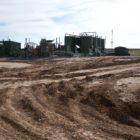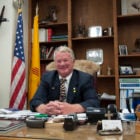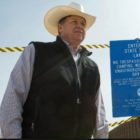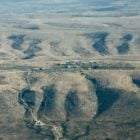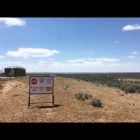Uncategorized
Oil Conservation Division could issue fines again under legislation
|
For the last decade, New Mexico’s Oil Conservation Division has been like a traffic cop that can’t write speeding tickets. That’s the metaphor advocates give for a bill that would reinstate the division’s right to issue fines for bad actors, which, amid booming oil business in the southeastern parts of the state and an increase in spills documented by the department, have hovered near zero. The state’s highest court in 2009 ruled the division couldn’t issue fines because the Oil and Gas Act didn’t grant it that authority. “If you look at the way the penalties were collected, it basically fell off a cliff, and the last administration didn’t show any interest in actually enforcing our oil and gas regulations, so I think it’s time that we stepped up and got back to doing that,” said Rep. Matthew McQueen, D-Santa Fe. McQueen and Sen. Richard Martinez, D-Española, are cosponsoring SB 186, legislation that would empower the Oil Conservation Division to once again issue fines.
